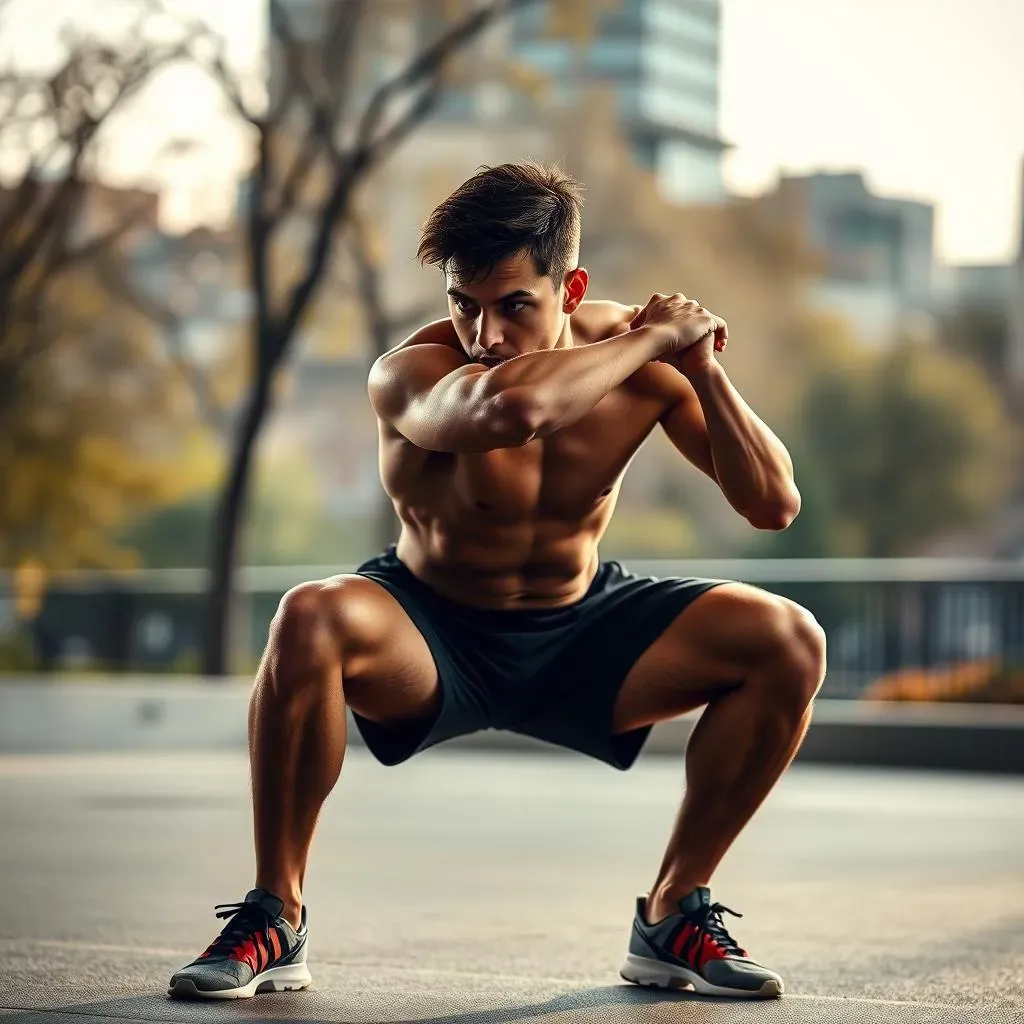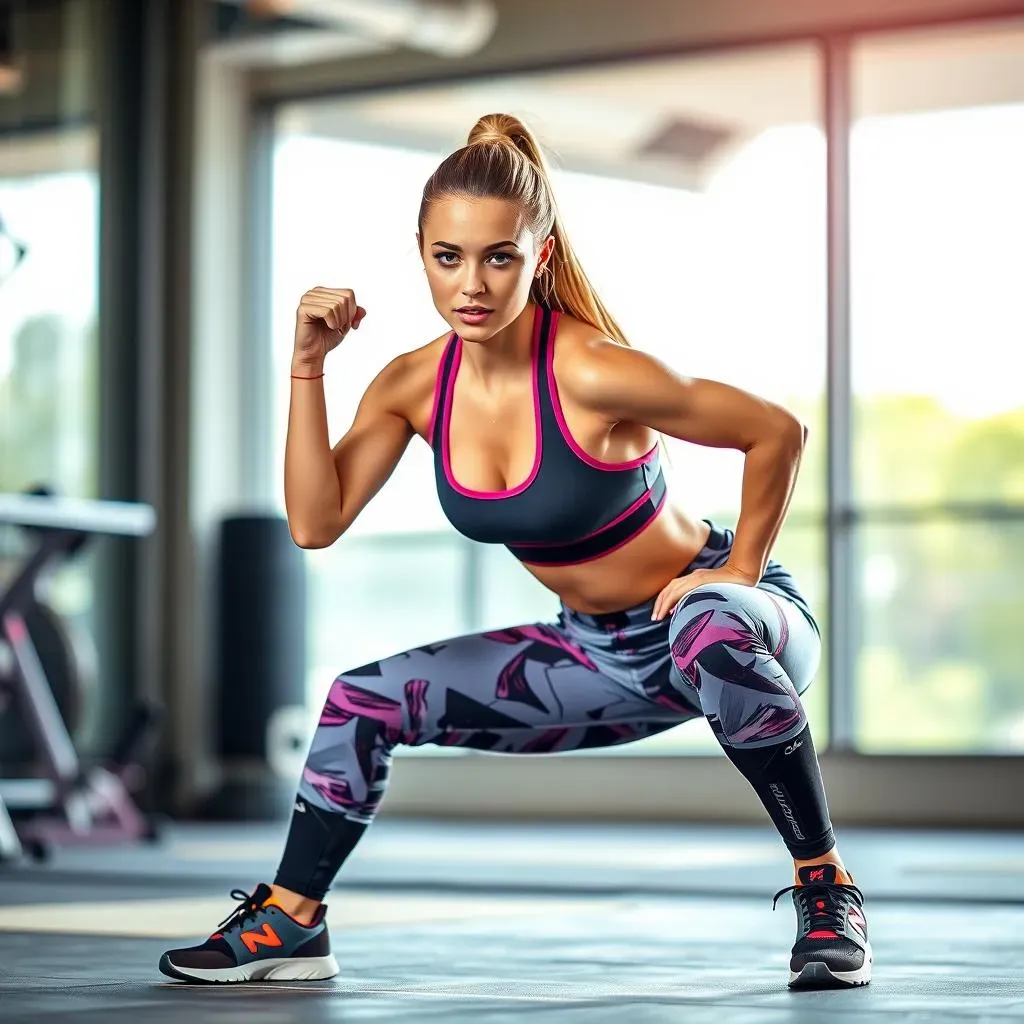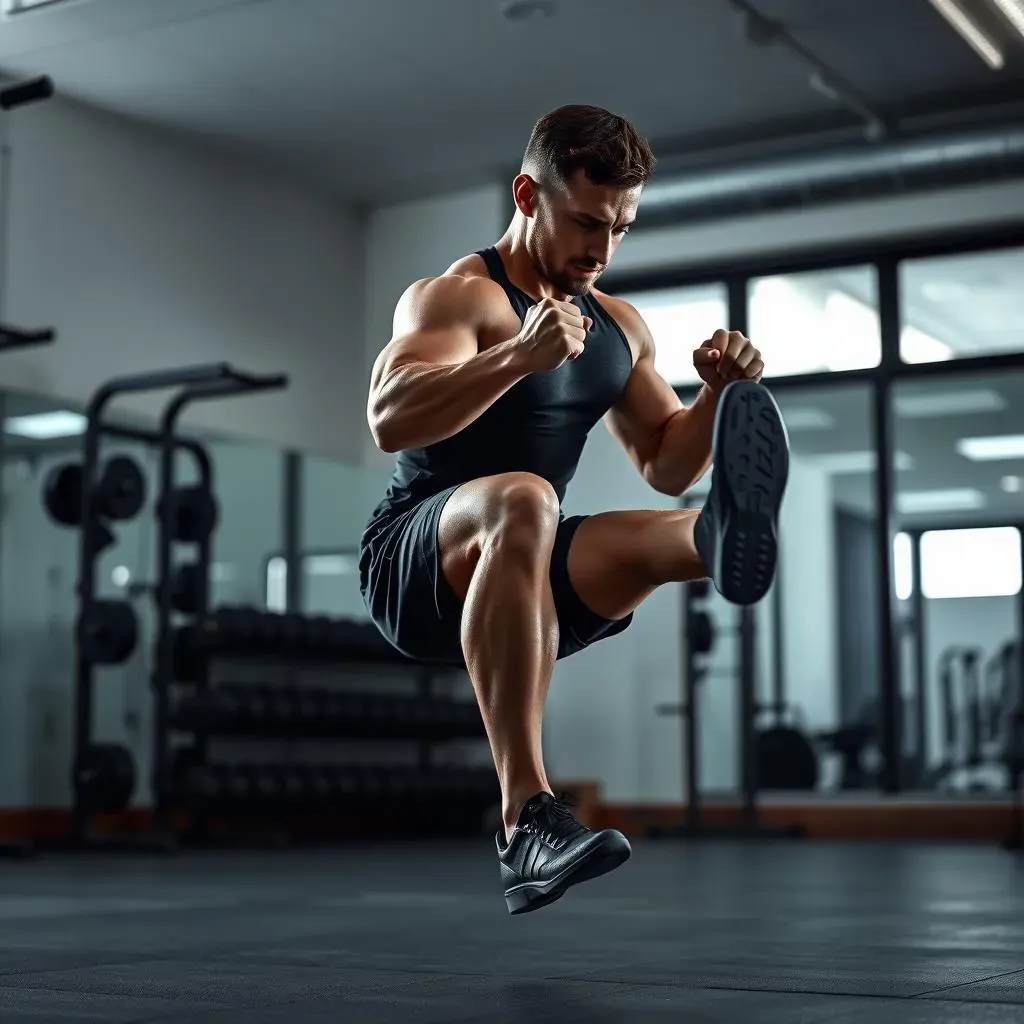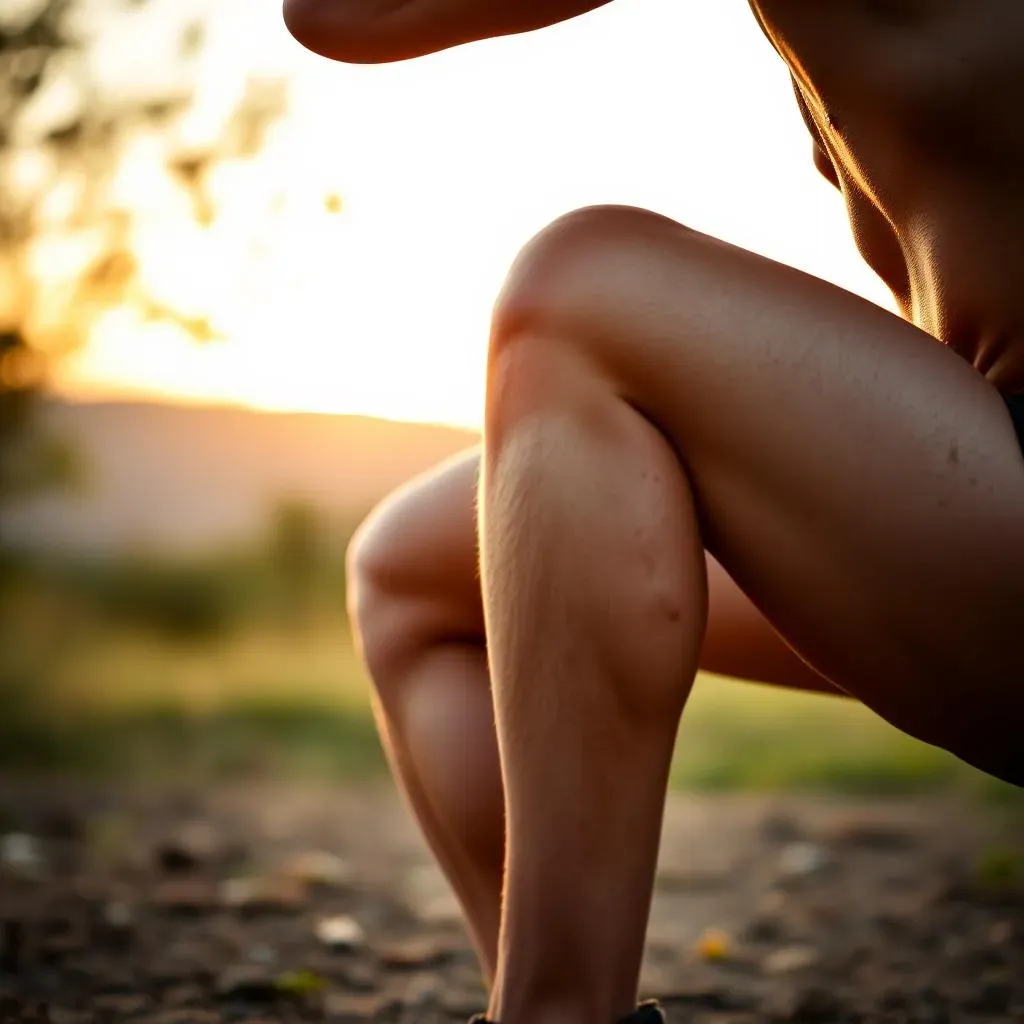Table of Contents
Welcome to the world of calisthenics legs, where you can unlock the full potential of your lower body without the need for any equipment. Calisthenics legs are a powerful way to build strength, agility, and endurance, using your own body weight as resistance. Whether you're a beginner or an advanced athlete, calisthenics legs offer a wide range of exercises and workouts that can be tailored to your fitness level and goals. From squats and lunges to pistol squats and jump squats, we'll explore the most effective calisthenics legs exercises to help you achieve the strong, lean legs you've always wanted. In this article, we'll delve into the benefits of calisthenics legs, discuss proper technique and training tips, and provide you with a comprehensive workout routine to maximize your results. So, let's get started on this journey to calisthenics legs excellence and discover how you can transform your lower body using nothing but your own body weight.
Introduction to Calisthenics Legs: Building a Strong Foundation

Introduction to Calisthenics Legs: Building a Strong Foundation
Calisthenics legs are a fantastic way to build strength, agility, and endurance in your lower body without the need for any equipment. Using your own body weight as resistance, you can perform a variety of exercises that target different muscle groups in your legs. From squats and lunges to calf raises and leg raises, there are countless calisthenics exercises that can help you achieve the strong, lean legs you've always wanted.
Before diving into the world of calisthenics legs, it's essential to understand the importance of proper technique and form. Many people make the mistake of rushing into calisthenics exercises without learning how to perform them correctly, which can lead to injuries and ineffective workouts. In this section, we'll cover the fundamental principles of calisthenics legs, including how to warm up, cool down, and listen to your body.
Exercise | Muscle Group | Benefits |
|---|---|---|
Squats | Quadriceps, Hamstrings, Glutes | Builds strength, improves balance and flexibility |
Lunges | Quadriceps, Hamstrings, Glutes | Improves balance, strengthens legs, enhances agility |
Calf Raises | Calf Muscles | Improves ankle strength, enhances jumping ability |
- Start with basic exercises like squats and lunges
- Gradually increase difficulty by adding variations such as jump squats and pistol squats
- Focus on proper form and technique to avoid injuries
- Listen to your body and rest when needed
To get the most out of your calisthenics legs workout, it's crucial to create a routine that challenges you but also allows for proper recovery. As you progress, you can incorporate more advanced exercises and techniques to continue building strength and agility. Remember, consistency and patience are key when it comes to calisthenics legs. With dedication and the right approach, you can unlock the full potential of your lower body and achieve the strong, lean legs you've always desired.
Calisthenics Legs Exercises for Beginners: Squats, Lunges, and More

Calisthenics Legs Exercises for Beginners: Squats, Lunges, and More
Getting Started with Calisthenics Legs Exercises
As a beginner, it's essential to start with the basics. Squats and lunges are two of the most fundamental calisthenics legs exercises. Squats work multiple muscle groups in your legs, including your quadriceps, hamstrings, and glutes. Lunges, on the other hand, target your quadriceps, hamstrings, and glutes, while also improving your balance and agility.
To perform a proper squat, stand with your feet shoulder-width apart, then bend your knees and lower your body until your thighs are parallel to the ground. Push back up to the starting position and repeat for 12-15 reps. For lunges, stand with your feet together, take a large step forward with one foot, and lower your body until your back knee almost touches the ground. Push back up to the starting position and repeat with the other leg.
Exercise | Muscle Group | Benefits |
|---|---|---|
Squats | Quadriceps, Hamstrings, Glutes | Builds strength, improves balance and flexibility |
Lunges | Quadriceps, Hamstrings, Glutes | Improves balance, strengthens legs, enhances agility |
Progressing to More Challenging Exercises
Once you've mastered squats and lunges, it's time to move on to more challenging calisthenics legs exercises. Calf raises are an excellent way to improve ankle strength and enhance your jumping ability. Stand on the edge of a step or curb with your heels hanging off, raise up onto your tiptoes, and then lower back down. Repeat for 12-15 reps.
Another great exercise for beginners is the glute bridge. Lie on your back with your knees bent and feet flat on the ground, then lift your hips up towards the ceiling, squeezing your glutes at the top. Lower back down and repeat for 12-15 reps.
- Start with 3 sets of 12-15 reps for each exercise
- Gradually increase the number of reps and sets as you build strength and endurance
- Focus on proper form and technique to avoid injury
Additional Tips for Beginners
Remember to listen to your body and rest when needed. It's also essential to warm up before your workout and cool down afterwards to prevent injury. Stay hydrated and fuel your body with a balanced diet to support your calisthenics legs journey.
As you progress, consider incorporating more advanced calisthenics legs exercises into your routine, such as jump squats and pistol squats. With dedication and the right approach, you'll be on your way to building strong, lean legs using nothing but your own body weight.
Advanced Calisthenics Legs Workouts: Pistol Squats, Jump Squats, and Calf Raises

Advanced Calisthenics Legs Workouts: Pistol Squats, Jump Squats, and Calf Raises
Mastering Pistol Squats for Explosive Power
Pistol squats are a challenging yet effective calisthenics exercise that targets your quadriceps, hamstrings, and glutes. To perform a pistol squat, start by standing on one leg, keeping the other foot lifted off the ground. Slowly lower your body down into a squat, keeping your back straight and your core engaged. Push back up to the starting position and repeat with the other leg.
Pistol squats require balance, strength, and control. They're an excellent exercise for building explosive power and improving your overall athleticism. Start with 3 sets of 8-10 reps on each leg and gradually increase the difficulty as you build strength and confidence.
Exercise | Muscle Group | Benefits |
|---|---|---|
Pistol Squats | Quadriceps, Hamstrings, Glutes | Builds explosive power, improves balance and strength |
Jump Squats and Calf Raises for Enhanced Agility
Jump squats are another advanced calisthenics legs exercise that can help improve your agility and endurance. Stand with your feet shoulder-width apart, lower your body into a squat, then explosively jump up into the air. Land softly on the balls of your feet and repeat for 12-15 reps.
Calf raises are an excellent exercise for targeting your calf muscles and improving ankle strength. Stand on the edge of a step or curb with your heels hanging off, raise up onto your tiptoes, and then lower back down. Repeat for 12-15 reps.
- Start with 3 sets of 12-15 reps for jump squats and calf raises
- Gradually increase the number of reps and sets as you build endurance and strength
- Focus on proper form and technique to avoid injury
Additional Tips for Advanced Calisthenics Legs Workouts
As you progress to more advanced calisthenics legs workouts, remember to listen to your body and rest when needed. It's also essential to warm up before your workout and cool down afterwards to prevent injury. Stay hydrated and fuel your body with a balanced diet to support your calisthenics legs journey.
Consider incorporating other advanced exercises, such as single-leg deadlifts and step-ups, into your routine. With dedication and the right approach, you'll be on your way to achieving the strong, agile legs you've always wanted.
Calisthenics Legs Training Tips: Proper Technique and Progressive Overload

Calisthenics Legs Training Tips: Proper Technique and Progressive Overload
Mastering Proper Technique in Calisthenics Legs Exercises
Proper technique is essential when it comes to calisthenics legs exercises. Without it, you risk injury and reduce the effectiveness of your workout. Let's take squats as an example. When performing a squat, it's crucial to keep your back straight, engage your core, and lower your body down until your thighs are parallel to the ground. Avoid letting your knees extend past your toes, as this can put unnecessary strain on your joints.
Another critical aspect of proper technique is maintaining proper form throughout the entire range of motion. This means avoiding any jerky or bouncy movements, which can put unnecessary stress on your muscles and joints. Instead, focus on slow, controlled movements that allow you to maintain tension in your muscles throughout the exercise.
Exercise | Key Points of Technique | Common Mistakes to Avoid |
|---|---|---|
Squats | Keep back straight, engage core, lower until thighs are parallel to ground | Letting knees extend past toes, arching back, or using momentum |
Lunges | Keep front knee behind toes, maintain upright posture, push back to starting position | Letting front knee extend past toes, leaning forward, or not lowering deep enough |
- Focus on slow, controlled movements throughout the exercise
- Engage your core and maintain proper posture
- Avoid jerky or bouncy movements that can put unnecessary stress on joints
Progressive Overload for Continuous Strength Gains
Progressive overload is a training principle that involves gradually increasing the intensity of your workouts over time to challenge your muscles and stimulate growth. In calisthenics legs, this can be achieved by increasing the number of reps, sets, or difficulty of exercises. For example, if you're doing squats, you can start with 3 sets of 12-15 reps and gradually increase the number of reps or sets as you build strength.
Another way to apply progressive overload is by modifying exercises to make them more challenging. For instance, you can move from bodyweight squats to jump squats or pistol squats, which require more strength, power, and control. Remember to only increase the difficulty when you feel you're ready, as pushing yourself too hard can lead to injury.
Exercise | Progressive Overload Methods | Benefits |
|---|---|---|
Squats | Increase reps or sets, modify to jump squats or pistol squats | Builds strength, power, and endurance |
Lunges | Increase reps or sets, modify to walking lunges or lateral lunges | Improves balance, strength, and agility |
- Gradually increase the number of reps or sets as you build strength and endurance
- Modify exercises to make them more challenging when you're ready
- Listen to your body and rest when needed to avoid injury
Maximizing Calisthenics Legs Results: Nutrition, Recovery, and Mindset

Maximizing Calisthenics Legs Results: Nutrition, Recovery, and Mindset
Nutrition for Calisthenics Legs: Fuel Your Body
A well-balanced diet is essential for supporting your calisthenics legs journey. Your body needs the right fuel to recover from intense workouts and build strong, lean muscles. Focus on consuming plenty of protein-rich foods like lean meats, fish, eggs, and legumes to help repair and grow your muscles. Complex carbohydrates such as whole grains, fruits, and vegetables provide energy for your workouts, while healthy fats like nuts, seeds, and avocados support overall health and hormone production.
Food Group | Examples | Benefits |
|---|---|---|
Protein | Lean meats, fish, eggs, legumes | Repairs and builds muscle tissue |
Complex Carbohydrates | Whole grains, fruits, vegetables | Provides energy for workouts |
Healthy Fats | Nuts, seeds, avocados | Supports overall health and hormone production |
Hydration is also crucial, so make sure to drink plenty of water throughout the day. Aim to eat 5-6 meals per day, spaced out every 2-3 hours, to keep your muscles fueled and support recovery.
- Eat a balanced diet with plenty of protein, complex carbohydrates, and healthy fats
- Stay hydrated by drinking plenty of water
- Eat frequent meals to support muscle recovery and growth
Recovery Techniques for Calisthenics Legs
Recovery is just as important as the workout itself. After each calisthenics legs session, take the time to stretch and foam roll your muscles to reduce soreness and improve flexibility. Getting enough sleep is also vital, as this is when your muscles repair and grow. Aim for 7-9 hours of sleep per night to support your fitness goals.
In addition to stretching and sleep, consider incorporating recovery techniques like self-myofascial release, contrast showers, and massages. These can help reduce muscle tension, improve circulation, and enhance overall recovery.
Recovery Technique | Benefits | Frequency |
|---|---|---|
Stretching | Reduces soreness, improves flexibility | After each workout |
Foam Rolling | Reduces muscle tension, improves circulation | 2-3 times per week |
Self-Myofascial Release | Reduces muscle tension, improves range of motion | 2-3 times per week |
- Stretch and foam roll after each workout
- Get 7-9 hours of sleep per night
- Incorporate recovery techniques like self-myofascial release and massages
Mindset for Success in Calisthenics Legs
A positive mindset is essential for achieving success in calisthenics legs. Set clear goals for yourself, whether it's to increase strength, endurance, or agility, and create a workout plan to help you achieve them. Stay motivated by tracking your progress, celebrating small victories, and reminding yourself why you started in the first place.
Surround yourself with supportive people who encourage and motivate you to push your limits. Believe in yourself and your abilities, and don't be afraid to try new exercises or challenge yourself in new ways.
- Set clear and achievable goals
- Stay motivated by tracking progress and celebrating small victories
- Surround yourself with supportive people who encourage and motivate you
Conclusion: Unlocking the Full Potential of Calisthenics Legs
In conclusion, calisthenics legs offer a transformative approach to building strong, agile legs without the need for equipment. By mastering exercises like squats, lunges, pistol squats, and calf raises, you can improve your overall fitness, enhance your athletic performance, and boost your confidence. Remember to focus on proper technique, progressive overload, and consistency to achieve optimal results. With dedication and persistence, you can unlock the full potential of your legs and enjoy the numerous benefits that calisthenics legs have to offer. Start your calisthenics legs journey today and discover a stronger, leaner, and more agile you. Visit calisthenicsfrance.com for more fitness tips and workout routines to help you on your fitness journey.
